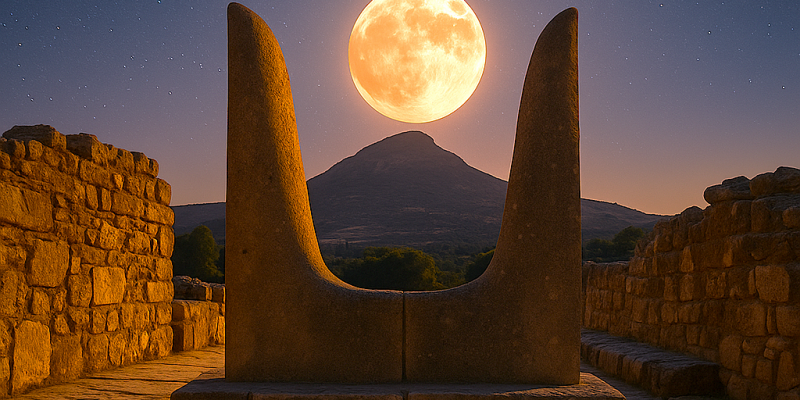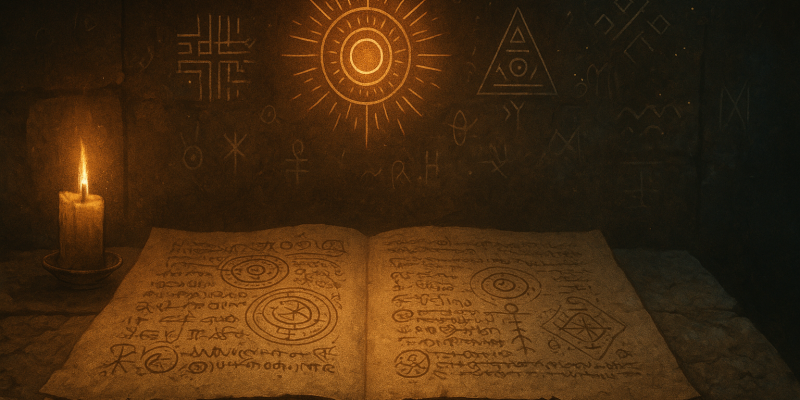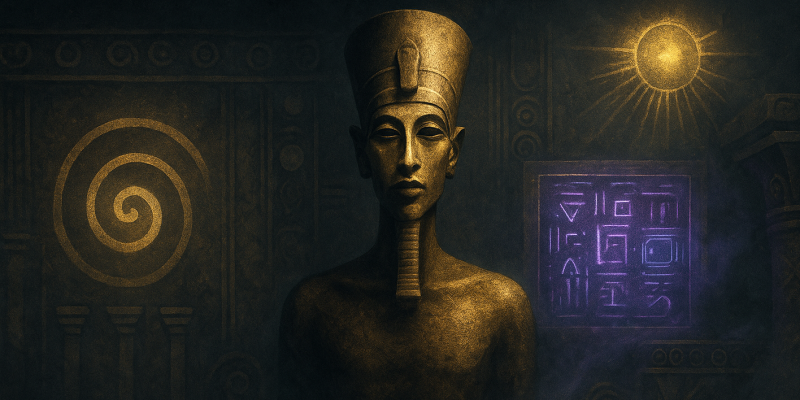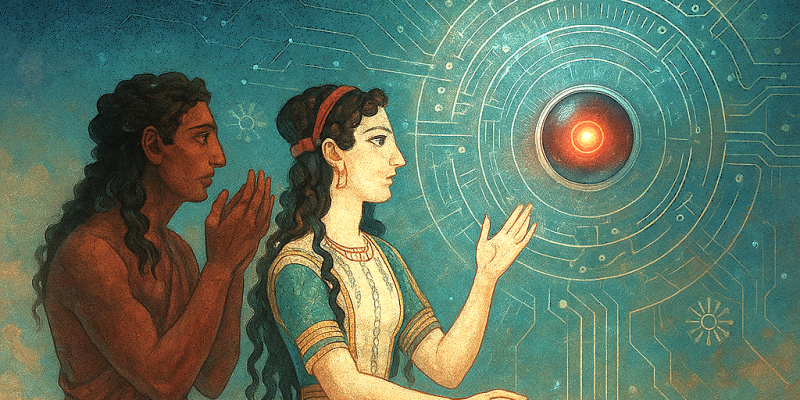Were the Keftiu “horns of consecration” astronomical instruments as well as sacred symbols? This richly illustrated exploration follows the full moon over Mount Juktas, linking Astarte, Inanna, Potnia Theron, and Ariadne in a ritual alignment of sky, myth, and stone.
Across the Bronze Age world, few symbols are as enigmatic-or as potent—as the “horns of consecration” found throughout Minoan Crete. Often interpreted as stylized bull horns, they crown altars, frescoes, and palace parapets. But what if they are more than religious ornamentation? What if, at a precise astronomical moment, the moon itself appears to rise within them—transforming stone into a cosmic vessel?
The Goddess in Transit
Astarte—goddess of fertility, war, and the evening star—is often depicted traveling in a double-ended boat. Some scholars have proposed that this motif represents her celestial voyage from the Levant to the Aegean, a spiritual migration that may have reached Crete. The boat, intriguingly, mirrors the form of the Minoan horns: twin curves, symmetrical, part beast, part womb.
When viewed under specific conditions—especially during a full moon low on the horizon—the horns of consecration may frame the moon perfectly, creating a visual echo of the goddess herself riding the sky. The image becomes not just symbolic, but experiential—a sacred moment embedded in landscape and architecture.
[Read more…] about The Moon Between the Horns: The Festival of Ascent in Keftiu






